Radars are being installed at the top of an engineering building at the University of Birmingham as part of a demonstration intended to test and prove the precision of quantum-enabled radar detection capabilities.
“A key part of keeping everyday life secure is being able to detect dangerous or unsafe situations before they occur. Quantum enabled radar technology research, undertaken by academics at the UK Quantum Technology Hub Sensors and Timing, aims to do precisely this.”
The Quantum Technology Hub is led by the University of Birmingham and partnered with the Universities of Glasgow, Strathclyde, Sussex, Imperial, Nottingham, Southampton as well as the National Physics Laboratory and the British Geological Survey.
Quantum radars could provide users with enough detail to identify aircraft, missiles, and other aerial targets by specific model, you can read more about their potential impact on warfare here.
The radars are being developed and installed by Aveillant, a radar technology company whose mission is to move radar technology into the information age by powering a full digital picture of the sky.
The radar technology being exhibited at the demonstration is dependent on the Hub’s compact atomic clock oscillators., housed on campus. These oscillators provide the high precision and low signal noise required for the radar to detect small, slow moving objects, such as drones, at longer distances, and even in cluttered environments.
The organisation say that ‘radar detection is a deceptively complex necessity in the modern world, it is required for a surprisingly wide range of sectors’. For example, high precision radar will ensure autonomous vehicles can detect hazards well ahead of time.
Hub academics are also developing next generation distributed radar systems, which will transform surveillance by providing much greater coverage and maintaining real-time situational awareness in highly congested and cluttered environments.
The EPRSC-funded project Mapping and Enabling Future Airspace (MEFA), based at the University of Birmingham, will also benefit hugely from the radar installation.
“MEFA is a three-year interdisciplinary project bringing together radar experts from across the University to study the use of urban airspace. The project will investigate how radar can be used to study the effects of urban developments on migrating birds, and also to differentiate between flying birds and small drones. Data collected during the radar installation will be incredibly beneficial for the MEFA project.”
Professor Chris Baker, Chair in Intelligent Sensor Systems at the University of Birmingham, said:
“By putting in place this highly sophisticated world-leading technology, we and our partners can explore a wide range of advance, novel networked radar surveillance concepts.”
Dr Dominic Walker, Chief Executive Officer of Aveillant, added:
“We are delighted that our Holographic Radars are being used in this programme. At Aveillant we are always looking to push the boundaries of our technology, and working with some of the UK’s leading academic institutions such as the University of Birmingham, is allowing us to do just that.”


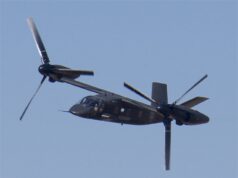
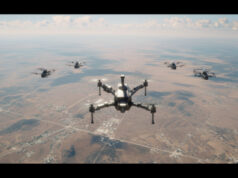
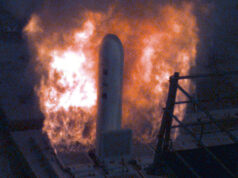




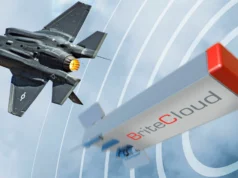
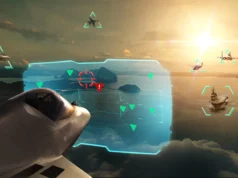
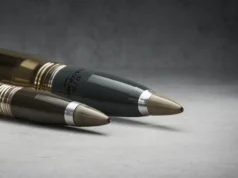

Presumably any number of Chinese post graduate students will be there to witness the event and aid the ‘technology transfer’…
This is us playing catch up in many senses the Chinese started the race towards quantum radars last year when they announced their research and working prototype (can’t be verified), it’s not a race we are leading. Thankfully the majority of the theory of it has already been publish multiple times in scentific journals just the defence industry around the globe took a little while to cotton on by the looks of things.
I did wonder if the current hoo-ha over chinese graduate placement was more mutually beneficial. On the face of it, although nothing much surprises any longer, the idea that a foreign national from China would be invited to absorb all our knowledge without some reciprocity seems pushing naivety to its limits. The indication or otherwise could come down to whether or not our graduates are similarly embedded at equivalent Chinese universities. Any knowledge on that aspect?
In all honest not much idea of the numbers of foreign students in Chinese institutions at all, what I can say though, is there is a decent number of Brit’s who choose to go to China after graduating to teach in schools and either do post grads there or shortly after their return, that to me would suggest at least a small reciprocal ‘knowledge share’.
My main point is that it seems futile to worry about international students being involved in research that is going to be published in scientific journals.
I suspect it’s far more nuanced than that mind (though I see the researchers as a potential direct threat). As an historical example, the principles of both the axial and centrifugal turbojet were set out in the mid twenties (arguably earlier) but that’s a far cry from detailing the exact methods to develop and achieve true success. Even Griffiths who made practical the axial flow concept we all are familiar with today, (and wrote descriptive papers on it) only ever, back then saw it’s exploitation in the form of a turboprop, believing actual thrust would be quite limited, which held back axial flow development in Britain for nearly a decade, indeed even Whittles work too (as he judged it impractical) so it’s generally all the work beneath and behind those papers that is far more protracted and protected (at least in theory). In the case of the jet, British understanding, advances (plus availability) in and of complex metallurgy made for far more reliable and practical engines while the truly advanced developments were fine tuned and kept away from prying eyes secretly in test beds for advantageous post war commercial exploitation which they were planning for from 1942 interestingly.
Thought the quantum tech came from Oxford University and was shared with the Chinese lol
The theory behind using quantum entanglement as a new radar was published in an open research paper for peer review like 90% of research worldwide (don’t know by which institute) it was shared with the whole world.
Nope.
Aveillant, a Cambridge start up, was first on the market with these 3D holographic radars years ago. They were originally designed for wind farms to track approaching birds, they are that sensitive. But in recent years the radar was used to detect drones flying near airports. This is just the logical extension of that technology.
I work in a university with plenty of Chinese postgrad students. I can assure you there’s nothing to worry about.
Most, I don’t know how they even dress themselves in the morning! :-p
Of course. Colleges in the West just can’t resist the tuition fees the Chicoms give them. Ugh
Indeed. Cheap Communit Chinese money has put our weak politicians into a trance for decades.
Exactly. We should stop all Chinese students from attending our universities. This Communist regime is a menace to the world, we don’t want their future generations taking their ideas and tech from us.
Quantum? Holographic?
Nice words to encourage professors to obtain cosy sources of funds?
It works via Quantum Entaglement. Rather than sending a wave of radio energy you entangle a pair of photons in the microwave band. You send one towards the target and retain the other. You can then observe the reaction of the photon hitting the target in its entangled partner even if the photon sent out doesnt reflect back to a receiver. (Though heisenbug uncertainty principle kicks in and you cant know everything about the retained photon you can through quantity observe a result trend). Through repetition you would eventually end up with a result similar to the picture at the top, allowing you to see in detail things which would otherwise have a very low radar signature.
Personally I am a fan of the technique where you infer a stealth object by observing the void in background radio signals it creates essentially seeing the radio shadow it casts.
Its all good in theory but impractical in practice (at the moment)! As you say, a quantum radar relies on quantum entanglement, but that’s only half of the story. It should really be called quantum illumination. By using a microwave frequency as the carrier and then modulated using the proton’s frequency. The transmitted “signal” is given a unique waveform. Therefore, for a jammer it will be next to impossible with today’s technology to replicate the quantum signal. The problem of actually making the process into a workable model comes with the second part of the entanglement, i.e. the idler. For the radar to work the transmitted proton interacts with the target and then returns to the receiver. It is then compared with the stored idler proton, i.e. the entanglement twin. By measuring the difference between the two you can work out the range etc to the target. Herein lies the problem, how do you store the entangled twin, i.e. the idler? It has been proposed to design quantum memory, but we are not there yet. So far they have stored the idler in a fibre optic delay line. But that severely limits the physical range that can be achieved, as its proportional to the length of the fibre. At some point in the future they will make workable quantum memory. But at the moment without it, the quantum radar’s range is severely limited from a less than a metre to a few kilometres.
The idea is that the quantum radar when its transmitted signal interacts with the object can then be returned. However, it all depends on the shape and material that the object is made from. Which is exactly the same for a conventional RF radar. If for example a RF radar is targeting a F117 from the frontal aspect over 97% of the signal is reflected away from the radar source. This will be exactly the same for a quantum radar. The majority of protons that make up the signal part of the entanglement will be reflected away from the source. There will be an issue with radar absorbent material (RAM). if the RAM is of the right composition that it totally absorbs the signal. The bond between the entangled pair will be broken. However, this will then signal that the there is an object out there, as the idler will still be left. It is much the same affect as when a continuous wave radar sees a moving hole. Something is absorbing the signal, but there is still signal that misses the object and is being returned from being reflected off hills etc.
The other difference is that the quantum radar has a much better signal to noise ratio than a conventional radar. For example the 3% that is reflected back to the radar source by a F117 is generally absorbed by the atmosphere, depending on the difference in range. However, for a quantum radar, because of the entanglement it can work with a much weaker signal. So if its operating in an area with a lot of back noise, such as aboard a ship tracking a sea skimming missile against the choppy sea. It can filter out the noise much easier, thus making it easier to see the missile.
Do quantum radars mean the end to stealth? No. It just means that designers will have to tackle the threat in another way. An aircraft’s shape will play a big part in combating a quantum radar. Which is already being used against RF radars. So no right angles, high offset angles to the radar source, non-tubular construction and minimised panel gaps. However, there has been a drive to develop a new type of material specifically to combat bi-static/passive RF radar, which can track a target by observing the moving “hole” in the RF background. This material will also work against quantum radar. Unlike RAM, this material allows the signal to pass through. We have and have had aircraft made with this wonder material, its called wood, with the best example being the Mosquito. I will categorically state that it was not a stealth aircraft, as radar of the period could “see” inside the aircraft, where the signal was reflected off flying controls etc. But also the two huge Merlin engines and propellers would always give it away. Some universities are investigating materials that allow a signal to pass through it, much like an optical fibre allows a source of light to pass through. Thereby, allowing the material to curve the signal around solid objects such as an engine, that would normally be seen. It is a off shoot in the development of active chameleon camouflage.
Thanks for that. An interesting read.
Blimey davey and Watcherzero, I had read that twice and have lay down in a darkened room before I could absorb all that info!
We do have some very bright contributors!
That’s a brilliant explanation. Was reading only yesterday that at Cambridge there has been great progress in creating and holding individual photons for a whole range of purposes including transmitted information security. Interesting to see similar principles of entanglement being useful here too.
I’m off to bed…
Thank you for that. As I say, nice little earners for a few professors.
Thank you for that. Very informative. I’m familiar with the concept of ‘tracking the hole’ in the world of passive sonar. Couldn’t a sophisticated repeater jammer be made to ‘fill’ that hole?
Possibly, it is indeed doable against a conventional radar. The jammers used on the F18 Growler have this capability against continuous wave radar, as the waveform is quite simple to replicate. The Rafale’s “active stealth” is supposed to do this as well. The Thales Spectra uses a phased array radar jammer and can operate in a number of modes. It does the normal white noise or spoof jamming. But it can “supposedly” copy a radar signal, invert it and send it back. Theoretically cancelling out the signal. The problem the Rafale has is that when Spectra does this, it can’t do anything else, so its a one trick pony. But then again Leonardo’s Britecloud expendable decoys can also do this just as if not more effectively and at a far cheaper cost. Leaving the Typhoon’s Praetorian to continue monitoring for threats. The beauty with Briteclould is that each decoy can be programmed to combat a specific radar threat, whereas the Spectra can only deal with one or two at the most simultaneously.
To jam or spoof a quantum radar, you will need to know the exact frequency of the entangled pair of protons. The radar beam that is transmitted will be made up with thousands if not millions of protons each will have a unique frequency. This is the reason why they believe a quantum radar is unjammable with today’s technology. It may be doable in the future, but then not only will you need a quantum computer to try and predict each protons frequency. You will need a method or reproducing it in near real time.
Yes, I’ve always been more attracted by the concept of an off board jammer, such as Siren or Nulca, or indeed Britecloud than onboard jammers, however sophisticated. Thanks again for your informative posts
None of this is very new at all.
It was set out in an article in Scientific American in the ’80’s, when there was a lot of interest in the use of quantum pairs.
Although that article was more about using quantum pair security for fibre optics comms. But it did, as did follow on articles, discuss the broader uses of quantum pairs.
The issue, as always with quantum pairs, is the Heisenberg Uncertainty Principle, which impacts both on measurement and length of storage. By the time you take the uncertainty and measurement error on both of the pair then things can get really quite uncertain!
Whilst I agree that theoretically it has a better s/n and therefore sensitivity there is more of an issue about discrimination between the particles that you are interested in an other particles flying around that might blind the sensors.
Turning this from a lab experiment to battlefield usable tech is not at all simple and I am not 100% convinced it will make that journey. The potential prize is so great that it is worth the research effort and a lot of very useful stuff will be learned on the way.
When I was working in science there was a particular technology that was regularly trotted out to be the ideal technology for use in bomb detecting in airports. And yes, it did work very nicely in labs. The only trouble was the two orders of magnitude missing from its real world sensitivity.
What’s gonna fly over Brum that’s Stealthy? Unidentified Flying Oxtails?
If the academics took comfort from their research would that be “Solace of Quantum”?
Perhaps a first step towards what could form the core of the T4X in 15-20 years
Lets hope there are no Chinese “students” involved in this project!!
I’m sorry George, but some of the material is incorrect. Today’s “standard” RF radars can already identify what a target is by its shape and using imaging techniques.
A standard radar’s ability to determine whether it can track an object or not, but also determine what that object is, is in large part determined by the frequency (wavelength) of the transmitted signal. Basically the lower the frequency (longer wavelength) the more ambiguous the quality of the target’s resolution will be, due to angular dispersion and the wavelength being greater in length than the size of the object. As the frequency increases the wavelength get shorter. The shorter the wavelength more information can be gleaned about the target as more of the signal is reflected from it. Depending on the size of the target and the wavelength, you can start to resolve an image of the target. The higher the frequency and shorter the wavelength the better the resolution. At some point the wavelength will be so short that the image is practically being painted by the radar at which pointy the image becomes recognisable. Of course the longer wavelength radars have the ability to “see” an object if part of it is approximately less than a 1/4 wavelength of the transmitted signal due to Rayleigh scattering. But this only allows you to identify that there is an object out there. It can’t tell you precisely the range or bearing and it definitely won’t on its own tell you what the object is.
There are two forms of radar processes where you can form an image of a target. The first is a synthetic aperture techniques. This is like taking load of slices of an image over time then putting them together to form an image. This is the type of technique that a Sentinel aircraft uses to form an image of a battlefield. However, the Sentinel radar can also overlay moving targets onto the SAR image in near real time. The other technique is used by missiles such as Brimstone. Brimstone uses a monopulse radar operating around 94 GHz with a wavelength of 3.2mm peak to peak. By using such a tiny wavelength. a very high definition scan of the target can be achieved. The reflected signal produces a near optical quality image of the target. Brimstone uses this image to analyse the target to look for the weakest spot to attack, then changes its attack profile accordingly.
I was led to believe that HF radar could easily track a stealth aircraft. Could be wrong though
No, its not easy. For starters long wave radar are significantly more affected by background noise. If you have listened to a HF radio, you can hear the carrier signal fading in and out, which is due to atmospherics and background noise. A HF radar is no different. This means that the range to the target cannot always be relied upon, especially if you are using an over the horizon radar (OTH) that uses the upper ionosphere as the reflector to bounce the signal. Today’s computers can predict up to a point how a radar signal will interact with the ionosphere. But like weather predicting it cannot be relied upon.
The main reason for the difficulty in detecting a target at long range is beam spread diffusing the signal’s power. Something like the Russian 29B6 ‘Kontayner’ OTH Radar that uses a incremental stepped frequency range of 9.2MHz to 19.725MHz, which is a wavelength of 32.586m to 15.199m peak to peak. The other issues these radars have is the pulse width and pulse interval. In simplistic terms, because of the distance that the signal has to travel, the pulse widths and pulse intervals are quite large to make sure there is no self generated ghosting, i.e. letting the signal reach the target, before the next pulse train is sent. This means it is possible for an aircraft like the F35A, who’s wingspan is 11m to be totally missed by the illuminating wave. That’s not the whole story though due to half wave and quarter wave resonance effects, that cause backscattering. If the length of an edge of a wing for example is around 1/2 the radar’s wavelength. You do get a phenomenon, where a resonance is generated along the edge. This will cause the signal to be reflected back to the receiver.
The main development in using HF radars to detect stealth aircraft is through advanced signal processing made possible with today’s computers. These computers allow a greater amount of noise to be filtered out, but they cannot completely remove the noise. It is still quite easy for a F35 or B2 to hide from a HF/VHF radar, varying their height profile is one method that can be used to confuse the signal processing, as it relies on the target flying at a constant speed, height etc to mark out a target amongst the background noise. Whilst it is true that low frequency radar can show/detect a stealth aircraft. There are a lot of combinations that need to be added together to make this so.
Question-could this be a step towards improving the detection of stealth aircraft and if that is the case then it would be of huge significance.
Yes it can detect “stealth” aircraft. In fact there are many other ways to detect them already, ie infrared, optronics, multistatic, low band frequency etc… the Serbs detected the F117 back in the 1990s (one was shot down, the other was hit but able to make it back to an airfield) and the Iranians were able to detect the RQ170 Sentinel stealth drone in 2011.
“Stealth” has always been detectable, and with increased computing power these detection ranges increase.
That being said having a low observable radar signature allows you to get closer. So you have to balance low observable vs flight characteristics. The F22 got it right, unlike the F35 which sacrificed too many basic fundamentals.
Thanks for info Lord. Lockheed Martin basically admitted that the original stealth lable was only partially valid as the design progressed which poses the question-is being partially stealthy really worth much or more to the point, is it a valid feature at all. If a piece of the stucture is observable then it makes the whole aircraft visible.
As i said it is desireable to have low observability because it reduces the range of detection. ie better to be detected at 50km rather than 200km. The price of low observability unfortunately is more expense to build and maintain, and more importantly on basic flight fundamentals such as maneuvrability, speed, payload etc… so you need to strike the right balance between “stealth” and aerial performance, as you would in Formula 1 between handling and raw speed.
“Quantum radars could provide users with enough detail to identify aircraft, missiles, and other aerial targets by specific model”
Milimetric wave radars are already capable of this since 80’s. Today does not even need that, SAR and ISAR radars are capable. RAF Poseidon should be capable of it against ships.
Can this be applied to aircraft or ships?